Several progress states – the waypoints and phenomenological determinations – are important enough in the story of progress that we specifically name them
What we’re thinking
In the Progress Economy, some progress states are significant enough to name explicitly. They serve as:
- waypoints describing a seeker’s journey: the progress origin, progress sought, and progress offered
- judgements: the progress reached, and progress potential
These states form the basis for the story of how value emerges from progress (as progress comparisons). They are also essential tools for improving innovation, sales, and growth.
Why naming matters
Progress is moving, over time, to a more desired state. But where does a seeker start? What’s the end goal? How do we evaluate progress along the way?
Naming specific states gives us the language to describe progress clearly and consistently. In the Progress Economy, five states are frequently referenced:
| named state | description |
|---|---|
| progress sought | the more desired state a seeker aims to reach |
| progress origin | both the starting point for the progress seeker in a progress attempt and the starting point a proposition offers to help from (these are likely to be different) |
| progress offered | the state a helper offers to help the seeker reach through their proposition |
| progress potential | a phenomenological judgement, at a specific point in time, of what state might be reached |
| progress reached | a phenomenological judgement, at a specific point in time, of what state has been reached |
Let’s explore how each state plays a role in a progress journey.
Progress attempt waypoints
These three named states help us describe and visualise a Seeker’s progress journey – solo and with a Helper – in concrete, observable terms:
- progress origin
- progress sought
- progress offered
We can uplot them on our standard progress diagram as follows:
Every progress attempt starts at an individual progress origin and aims toward a individual progress sought. If a Seeker engages a proposition, then the destination is the proposition’s progress offered (which it offers to help reach from the proposition’s progress origin).
Progress origin
The Seeker’s progress origin is where a seeker begins their journey. It shifts over time as seekers accumulate capabilities – often shaped by experiences, including in unrelated markets and industries
progress origin (seeker): the attempt specific progress state from which a progress seeker begins a progress attempt
Helpers also assume a progress origin when designing propositions. It is from there they offer to help make progress. This origin likely does not align with the Seeker’s (unless by co-incidence or customisation).
progress origin (proposition): the starting point a proposition assumes it will help a progress attempt from
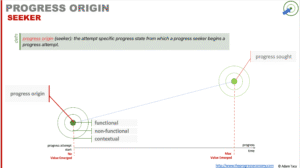
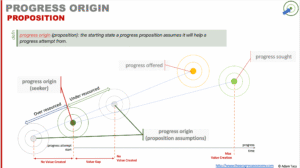
Progress sought
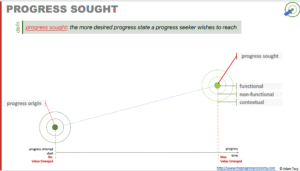
This is the desired state the seeker wants to reach. It evolves, driven by experience and growing expectations, over time.
To make analysis manageable, we often isolate and consider specific aspects of progress sought rather than attempting to analyse it in full. However, we need to remember some aspects may interact, or even contradict.
progress sought: the more desired progress state a progress seeker wishes to reach
Progress offered
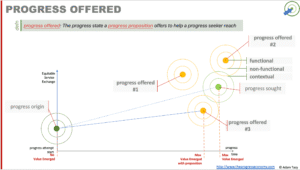
The progress offered state is what the helper offers to help a seeker reach if they engage the proposition. It should be informed by, but not necessarily identical to, the seeker’s progress sought.
Matching exactly often requires high levels of customization, which raises the effort (and cost) required to deliver. Helpers typically segment progress sought and design propositions around those segments to reduce this friction.
progress offered: The progress state a progress proposition offers to help a progress seeker reach
Some helpers look to deviate from a mainstream progress sought segment. Disruptive innovation and blue ocean strategy are two approaches that follow this idea.
It’s interesting to note that a helper’s progress offered is their view of progress potential.
Progress judgements
Along with waypoints, there are two named states that are repeatedly judged by the Seeker (and in some cases, additionally by the Helper). These are:
- progress potential
- progress reached
Progress potential
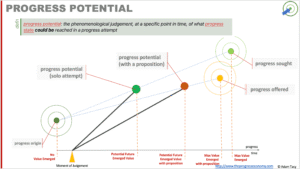
The progress potential state captures the phenomenological judgement, at a specific point in time, of the progress state that could be reached in a progress attempt. It’s a forward-looking sense of potential value.
It is predominantly judged by seekers and influences whether a Seeker makes a progress attempt (and engages a particular proposition, if doing so). It also evolves during the attempt, which may lead to them abandoning if they start seeing too low potential.
progress potential: the phenomenological judgement, at a specific point in time, of what progress state could be reached in a progress attempt
In some contexts, Helpers additionally assess a seeker’s potential. If judged too low, resources may be withheld. Try buying a high-end Italian sports car…
Progress reached
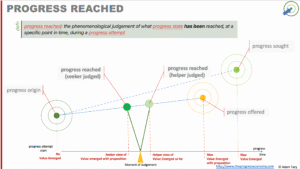
Progress reached is the phenomenological judgement, at a specific point in time, of the progress state that has been reached during a progress attempt
It is judged during and after a progress attempt, predominantly by seekers. If they feel progress reached is not aligned with expectations they may abandon the attempt.
progress reached: the phenomenological judgement, at a specific moment in time, of what progress state has been reached during a progress attempt
Like with progress potential, helpers sometimes make additional judgements on the seeker engaging the proposition. Potentially leading to resource withdrawal. Such circumstances may indicate value destruction is occurring.
Why this matters
Named progress points give us the insights into the progress journey story. Using the helps us understand how value emerges from progress. And from that, they help us understand sales (aligning propositions to seekers journey) and innovation (improving possible progress).
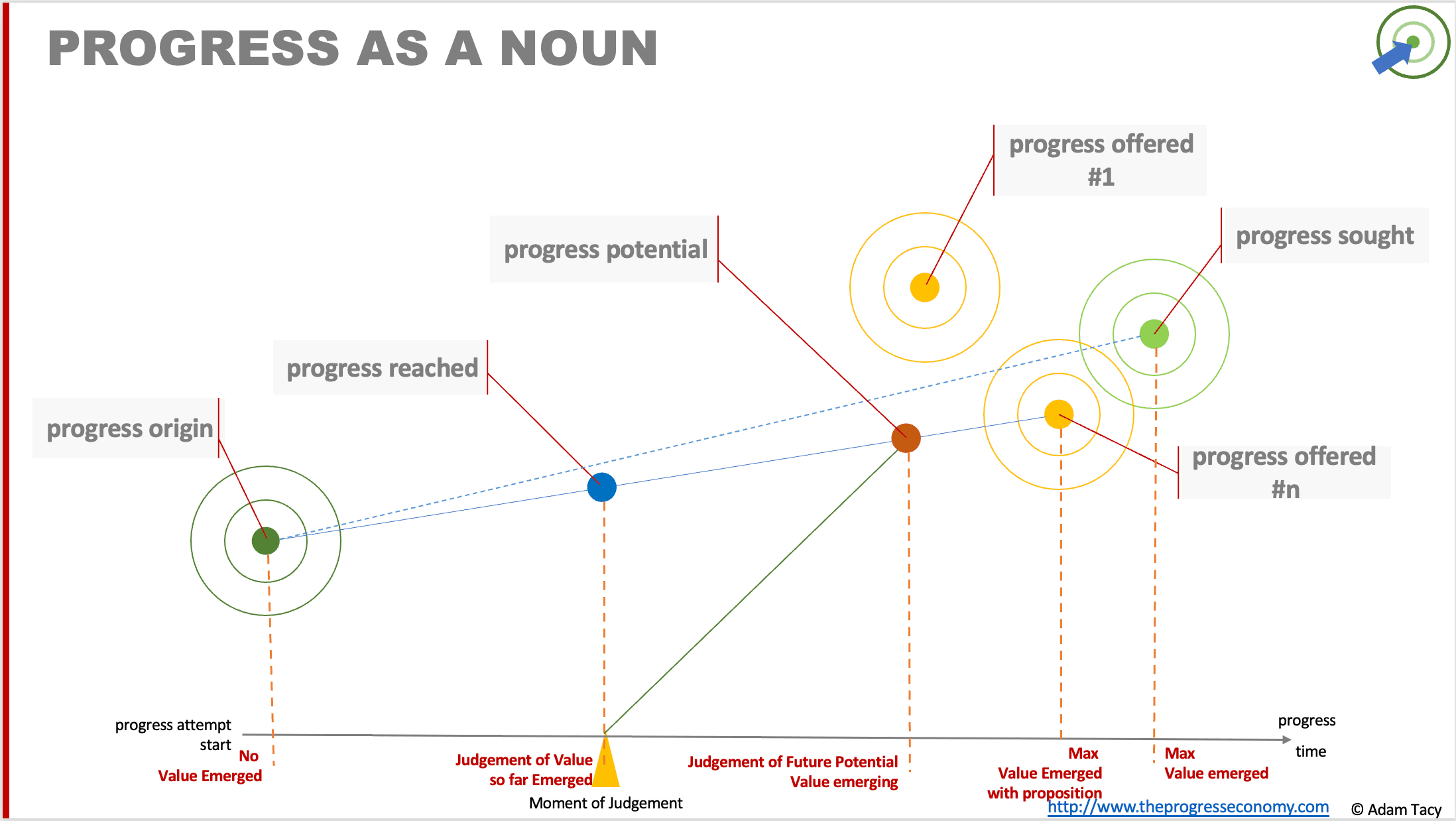

Let’s progress together through discussion…